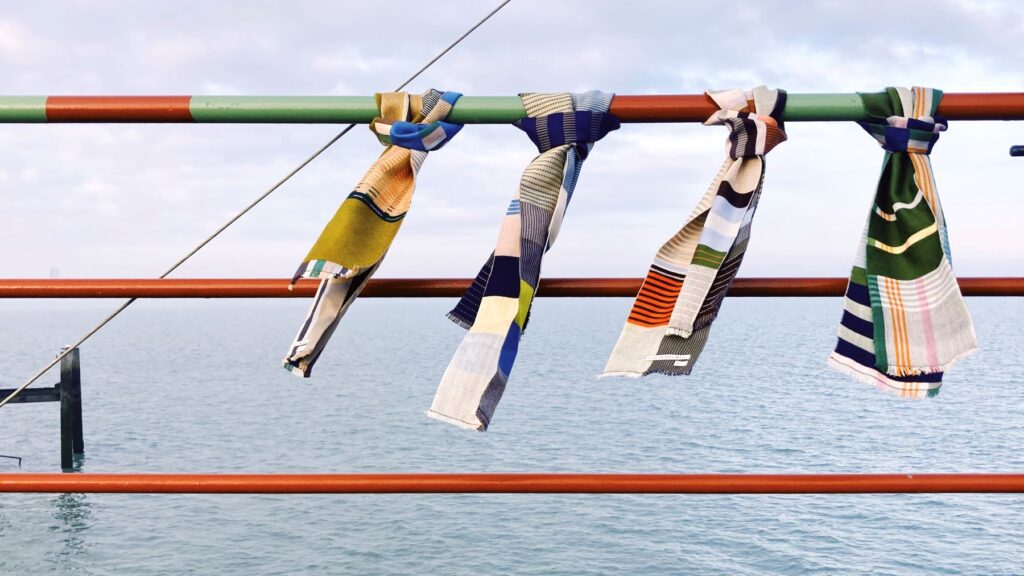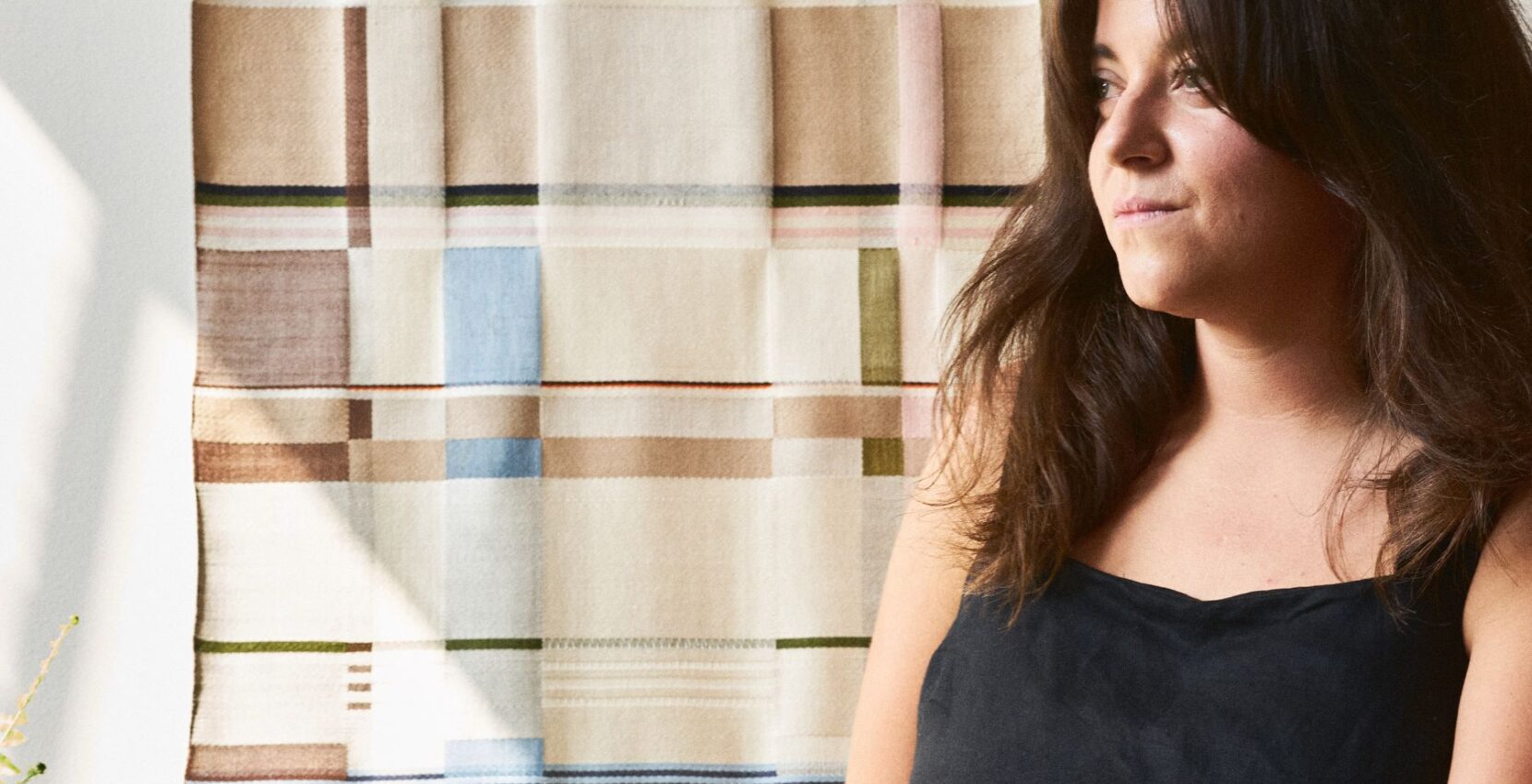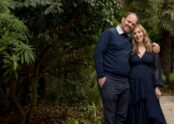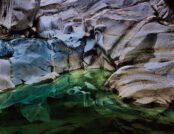The space textiles occupies, on that muddled line between the ‘art’s and the ‘crafts’ is contested. For decades now, feminist historians and artists have challenged the undermining of fibre based arts in their rallying against the traditional western-narratives of creative hierarchies. The result has been a revival and reappreciation of the medium by critics and institutions.
Eloise Holmes works straddles concepts of arts, crafts and fashion. A weaver, she produces wearables and wall hangings, with distinctives stripe with high quality materials. Holmes talks to Trebuchet from her North London studio all about weaving, getting advice from Paul Smith and never making the same piece twice.
How did you come to work with textiles?
I went to Camberwell in 2012 for an Art Foundation but I really didn’t like it. I almost gave up. I went to go and collect a form to leave but a tutor stopped me in the hallway and he asked me to try the textiles pathway before I left. He even gave me a book and said “take this home and have a look at it before you fill in the form to leave.” Looking at it I just thought, I had never seen work like that before – it was a crossover between art and manipulation but you didn’t have to paint or draw which were never my talents. I tried that pathway and absolutely fell in love with textiles.
I then ended up doing three years at Chelsea College of Art. I had to choose between knitting, stitching, printing and weaving. I could already knit, I wasn’t that interested in printing, embroidery felt too small. I thought if I am here for three years, I am going to learn something that I’m never going to learn anywhere else, and so I chose weaving.
At first, I thought it was too hard. Weaving is really, really mathematical and you have to join the synapses in your brain to understand how maths builds fabric, which I struggled with at the start. But once it clicked, I absolutely fell in love with it. I love the limitations of it, you can only have threads coming down like the warp and then the threads going across the weft. For me, I think it’s good to have a restraint, it increases my creativity.
What are your career highlights?
I was recognised by Paul Smith at my degree show, which was amazing. I have always loved his work and I wrote to him inviting him to my degree show, which he came to. Following on from that he invited me to his studio and we sat there for a couple of hours, I took some of my fabrics and we just chit chatted about similar inspirations and stories of the textiles industry.
I also did an Anya Hindmarch collaboration at the beginning of this year. It was in partnership with the Women’s Institute and they donated a selection of old protest banners to Anya. The concept of the store was a celebration of ‘make do and mend’ and craftmanship – especially that of young females. So I was able to do a range of scarves with a colour pallet based on each individual protest banner. It was really lovely to be involved in something which has been a part of our country for so long, but be able to put a modern twist on it.
Textiles is traditionally seen as being within the ‘female sphere’ and secondary to the ‘fine arts’, how do do you feel about this as a weaver who is a woman?
I really celebrate where weaving came from, and it’s never something that I don’t ever want to associate myself with, but I’m really keen on broadening people’s perspectives on it. I think the word craft can be seen as really fuddy-duddy, I want to switch that around. Just because I am a woman and a textile designer doesn’t mean that I am sitting here doing a ‘stitch and bitch’. I think if a man were doing this it would be seen very differently, and celebrated even more.

Who are the designers and artists you take inspiration from in your practice?
I think it would be hard to find a weaver that isn’t inspired by an artist called Annie Albers. Joseph and Annie were a married couple who had a lot to do with the Bauhaus and I adore her work.
Also people like Mark Rothko as well. Very, very simple, just plain colour, but the feeling of how do you kind of vibrate next to that colour when something is so huge in front of you in a room? Designer wise, as I said Paul Smith is a big inspiration. The idea of being able to just be recognised by a stripe, that is something I aspire to.
What have you got coming up in the next six months?
I have two collaborations with different artists coming up. They are both illustrators but very different, one is more pictorial and the other more graphic. I’m really excited to work with them and challenge where I see my work going by being led by an illustrator.
I also have the ability to go wide on the loom, so I will be going bigger in my work next year as well. I am really looking forward to not just doing accessories but bigger pieces which can hang on the wall.
Where do you envision your practice being in five years time?
Right now, I am on the only person who can make my textiles, so within the next five years what I would love to do is find a British textiles mill to expand my output whilst also celebrating the British textiles industry with sustainable practices. Often manufacturing work is scene as a ‘second class’ sort of work, but I would love to bring the love and passion back for textile manufacturing back to this country. You don’t just have to be a designer, but you can be a manufacturer and it can be a really good job.
Your practice straddles the traditional definitions of ‘art’ and ‘craft’. Where do you place yourself on this spectrum?
I see myself as totally down the middle line of artist/designer. I love the fact that what I do is more on the art side, because I don’t do the same thing twice. What you see in the fashion world is the aim of recreating the same thing over and over so people can see that, identify with it, and buy into it. What I do is far more arts lead in that it is totally individual, almost like wearable art. A lot of the scarves I have made are influenced by paintings, photography.
However, art is seen as precious and you shouldn’t touch it. I want to encourage people to hold what I make and let it drape in different ways and interact with it. My fabrics are double sided as well so it does need to be touched and manipulated, whether that’s on the wall and its turned around every now and then or even hung upside down! I would encourage that actually.
Featured Image: Silk Wall Hanging, Eloise Holmes 2022.
Photographer: Tom Lombard
Commissions and Works available at Eloweave

Ruth O’Sullivan is a writer and curator. Her work explores the impact of digital technologies on contemporary art practices and challenging gender disparity within the visual arts.




















